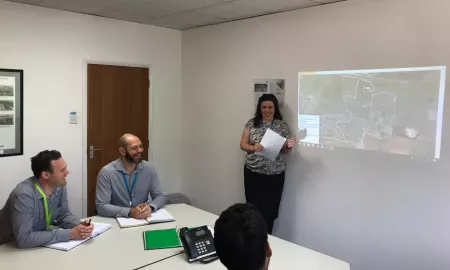Dr. Timmur Bangash is head of SOCOTEC’s Structural Engineering team, which sits within the organisation’s Building & Real Estate division. Bringing a huge amount of experience to help lead and organise the team, we spoke to Timmur about his day-to-day responsibilities, as well as the high profile projects that he has worked on over the course of his career.

What does a typical day as a head of structural engineering involve?
My role is key to the smooth functioning and the delivering capability of our team. Being a hands-on team leader, I will typically find myself running projects, as well as carrying out hands-on technical work. This may involve checking calculations or reviewing reports. I will often attend meetings where I will either be project managing one of our design schemes or carrying out business development strategies aimed at promoting our team and winning work. Once we are confirmed on a project, I will delegate the tasks amongst my team members and manage them through to completion.
What are your responsibilities within the team?
It is crucial to maintain client satisfaction by delivering services on time and on budget. Not only does this mean doing the work, but also to ensure that our team remains motivated. I have to ensure lines of communication are clear within our team, and with that in mind, I maintain an open-door policy which gives my team the confidence to highlight issues and work together to resolve them. Quality of our deliverables is important to myself and I strive towards maintaining a Quality Assurance process which ensures what we do is done to the highest standards.
How did you start out within the structural engineering sector? Did you require specific training/qualifications?
Structural engineering is all around us, yet as a profession, it is not very well publicised. Most people are unaware of the high level of skill needed to be a structural engineer. Like me, many of my co-professionals will have started out with university training and then undertaken many years of hands-on experience before they felt fully confident to undertake a lead design role.
What type of projects have you worked on? Are there any of note that are high profile/ of a particular interest?
I have worked for many of the UK’s best-known consultancies, which are household names. I have contributed on a variety of multimillion pound projects, which have included:
- Seventy story skyscrapers
- Underground metro systems
- Sports stadia
- Theme parks
- Airports
- Refurbishment.
What is your favourite thing about your role/working for SOCOTEC UK?
SOCOTEC has a great working culture in terms of ensuring an effective work-life balance. This in turns boosts productivity, ensuring that we make a positive difference to our clients and help to deliver projects that benefit our society and make it a better place to be.
What sort of challenges do you face in your role?
The main challenge that I enjoy is business development, as this is where I will go all out to grow our team in line with our project wins.
Do you have any advice for anyone looking to start a career within structural engineering?
Structural engineering is a vast discipline. It not only covers the effective design of a building’s skeleton, but also extends to bridges, dams, tunnels, rollercoasters and even statues/monuments. To pursue a career as a structural engineer, you will need to be adept at physics in order to assess load paths. You will need to be mathematical in order to understand the design process, and at the same time, have a commercial acumen to ensure that projects are delivered safely without stretching budgets.
Without a doubt, structural engineering can provide a stimulating career, and my advice for those starting is to be open to the opportunities that the profession can provide in terms of personal growth.
Want to find out more about SOCOTEC’s Structural Engineering services?

You might also like






Add new comment